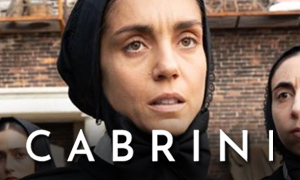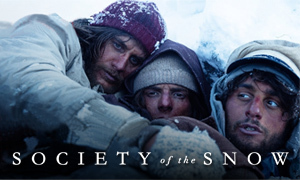How Accurate is Cabrini? The Movie vs. the Real Story of Frances Cabrini
Cristiana Dell'Anna
Born: August 24, 1985
Birthplace:
Naples, Campania, Italy
Frances Xavier Cabrini
Born: July 15, 1850
Birthplace: Sant'Angelo Lodigiano, Kingdom of Lombardy–Venetia, Austrian Empire
Death: December 22, 1917, Chicago, Illinois, USA (chronic endocarditis)
David Morse
Born: October 11, 1953
Birthplace:
Beverly, Massachusetts, USA
Archbishop Michael Corrigan
Born: August 13, 1839
Birthplace: Newark, New Jersey, USA
Death: May 5, 1902, New York, New York, USA (pneumonia)
Giancarlo Giannini
Born: August 1, 1942
Birthplace:
La Spezia, Liguria, Italy
Pope Leo XIII
Born: March 2, 1810
Birthplace: Carpineto Romano, département of Rome, French Empire
Death: July 20, 1903, Apostolic Palace, Rome, Kingdom of Italy (pneumonia)
Where was Saint Frances Cabrini born?
The youngest of 13 children, Maria Francesca Cabrini was born two months early in 1850 in the Italian village of S'ant Angelo Lodigiano near Milan to farmers Agostino Cabrini and Stella Oldini. She was small and frail and remained in poor health throughout her life. In researching the Cabrini true story, we discovered that bad health plagued her family and she was one of only four siblings who survived into adulthood. As a child, her father would read to her and her siblings from a book of missionary stories, which ignited Maria's imagination. Her dolls that she played with became nuns, and from a young age, she dreamt of joining a Catholic order, serving God and her church, and becoming a missionary herself.
Is the scene true where a young Frances Cabrini puts violets into paper boats and pretends to send them off as missionaries in a river?
This is based on a real-life detail from Frances Cabrini's life. As explained in the book Lives of Saints, her uncle, Luigi Oldini, was a priest who lived by a "swift canal," which the book God's Messenger states was the Venera River. While visiting her uncle, she made paper boats, dropped violets into them, and pretended that the flowers were missionaries. She launched the paper boats for far-off destinations like India and China. During one such instance of play with her boats, she tumbled into the river. She was quickly rescued but sustained a bad scare from the incident and a lifelong fear of water.
Did Frances Cabrini found her own Catholic order?
Yes. In the movie, Frances Cabrini (Cristiana Dell'Anna) meets with Pope Leo XIII (Giancarlo Giannini), who informs her that he was told she was rejected by three different Catholic orders. It's true that due to poor health she was turned down several times from joining religious orders, including the Daughters of the Sacred Heart, the Catholic order that had taught and mentored her. In 1880, Cabrini and seven other nuns founded the Institute of the Missionary Sisters of the Sacred Heart of Jesus. Members wore a gold ring with "a heart surrounded by luminous rays," which was the sign of the order.
An abandoned Franciscan friary in Cadogno was purchased and the sisters took in orphans and foundlings. They started a day school to help pay expenses. They also started classes in needlework and were able to make a little more income by selling their fine embroidery. After two years, a second mission was started at Cremona, followed by a boarding school for girls in Milan, the first of many such schools. In seven years time, Mother Cabrini had oversaw the establishment of seven such institutions, all staffed by nuns that she trained. Word of her achievements had reached Rome and Pope Leo XIII.
Did Frances Cabrini meet with Pope Leo XIII to request to be sent to work as a missionary in China?
Yes. The members of the Missionary Sisters of the Sacred Heart of Jesus, which was the Catholic order founded by Cabrini and seven other sisters, initially wanted to be missionaries in China. Like in the movie, a Cabrini fact-check confirms that she went to Rome to meet with Pope Leo XIII to discuss their request. The movie compresses several real-life meetings into one. It's true that the Pope told her to go "not to the East, but to the West" to New York to help the thousands of Italians who had immigrated to America, many of whom were impoverished.
While most of the dialogue of the Vatican meetings did not survive in the historical record, a few bits did, including an exchange between Cardinal and Cabrini that's featured in the movie. "There has never been an independent order of missionary women!" states Cardinal, to which Cabrini replies, "Mary Magdalen brought news of the Resurrection to the Apostles. If the Lord confided that mission to a woman, why should he not confide in us?!"
Was Frances Cabrini afraid of the water?
Yes. The true story confirms that she did have a fear of water, sparked by the fact that she had almost drowned as a child. However, she didn't let her fear stop her from crossing the Atlantic 23 times to carry out her charitable endeavors for immigrants in North America and around the world.
How old was Frances Cabrini when she arrived in America?
Mother Cabrini was 38 when she arrived in New York City on March 31, 1889 (only two years older than actress Cristiana Dell'Anna was at the time of filming the movie). As seen in the film, she arrived with six other nuns. Cabrini became an American citizen twenty years later in 1909, taking the oath of U.S. citizenship in Seattle. The movie speeds up the timeline somewhat to increase the drama and sense of urgency in the story. It dramatizes her life from age 38 to her early 40s.
The real Frances Cabrini lived until the age of 67. According to the St. Frances Cabrini Shrine in New York City, she passed away in Columbus Hospital in Chicago on December 22, 1917 from chronic endocarditis. She had founded the hospital in 1905. As noted by the Archbishop of Chicago, Cardinal Stritch, "The very day she died she had been wrapping candy for Christmas gifts for poor children."
Did the real Frances Cabrini speak English when she arrived in America?
No. A June 30, 1889 interview with Frances Cabrini in The Sun titled, "Missionaries to Our Italians: Nuns Sent from Rome to New York at Archbishop Corrigan's Request," noted about Sister Frances Cabrini, "She cannot talk English." One of the other nuns, Sister Serafina Tommasi, spoke perfect English and worked at teaching the others, including Cabrini, whenever they had time.
Did Frances Xavier Cabrini fight to improve the lives of immigrant orphans?
Yes. She fought for humane treatment, better living conditions, and elevated compassion for immigrant orphans, particularly those from Italy, who were living in severe squalor in New York City's Five Points neighborhood. Part of her mission was to also provide education for all of the immigrants, including the children.
In an interview with The Sun on June 30, 1889, just three months after she arrived in New York City, Cabrini said that her order's objective "is to rescue the Italian orphans of the city from the misery and dangers that threaten them and to make good men and women of them." In the movie, she tells New York Times reporter Theodore Calloway (Jeremy Bobb), "The rats have it better than children in Five Points," of which there is considerable truth. The neighborhood was infamous for its jam-packed tenements, rampant disease, and out-of-control crime, which persisted for more than 70 years. Five Points was previously the focal point of Martin Scorsese's Gangs of New York, which depicted the neighborhood about 25 years before the events in Cabrini.
"We include under the title of orphans not only the fatherless and motherless, but also the children that are abandoned, or whose parents do not properly care for them," she told The Sun. "We have found that many children are abandoned shortly after they reach this city. Their parents, who have come here expecting to be rich immediately, now learn their mistake, and, being unprovided with money, they set the children adrift to care for themselves."
Is the prostitute Vittoria based on a real person?
No. In the Frances Cabrini movie, Vittoria, portrayed by Romana Maggiora Vergano, gives Cabrini and the other sisters a place to stay for the night after they arrive in New York, at significant personal risk to herself. Vittoria volunteers at the orphanage that the sisters open, and gradually, she and Cabrini become friends. Despite playing an important part in the movie, the character seems to be entirely fictional. She is not given a last name and we found no mention of her in our research into the real story behind Cabrini.
Was Archbishop Michael Corrigan initially not supportive of Frances Cabrini's efforts to help the impoverished immigrants in New York City?
Though Mother Cabrini had written to Archbishop Corrigan to tell him that she would be arriving to help him, there was a misunderstanding as to the date of her arrival. When she arrived in New York City with six other nuns on March 31, 1889, earlier than Corrigan expected, there was no convent ready or place for them to stay. They spent the night on chairs in a neglected tenement building in the Five Points neighborhood of New York.
Like in the movie, her initial meeting with Corrigan did not go well. He did not approve of Cabrini's idea to establish an Italian orphanage on the refined East 59th Street (she thought the house would be ready when she arrived but it wasn't). Born in Newark, New Jersey, Corrigan was an Irish Catholic who put the interests of his countrymen over the newly arrived Italians. At odds with each other, Corrigan informed her that it would be better if she returned to Italy. Determined to carry out her mission, she politely replied that she cannot go back to Italy because the Pope had sent them to America to help the many impoverished Italian immigrants. Realizing she had no intention of returning, he found them housing at the Sisters of Charity convent. In time, a wealthy Italian benefactor, Countess Mary di Cesnola, whose husband was the first director of the Metropolitan Museum of Art, rented and furnished a home for the sisters.
Also, during her first year in America, Corrigan told her that she could only raise money from Italians. He didn't want her soliciting anyone else. This made raising funds extremely difficult, given that most Italians were living in poverty. In addition to their regular work of walking through the streets of Five Points to check on the families and children, Cabrini and her fellow sisters had to beg for money. As Corrigan began to see the difference she was making, he gradually came around to her efforts. As noted by the St. Frances Cabrini Shrine's website, despite their rocky start, she never wrote an unkind word about Archbishop Michael Corrigan.
Is John Lithgow's character, Mayor Gould, based on a real person?
No. The villainous mayor in the movie, who is hostile towards Cabrini's efforts to get care for the severely impoverished immigrant children, is a fictional character. There was no real-life Mayor Gould. In the movie, John Lithgow's racist Mayor Gould warns, "Our New York is being threatened by a wave of brown-skinned filth." In a scene later in the movie, he tells Cabrini, "You would have made an excellent man," to which Cabrini replies, "Men could never do what we do." These scenes are purely fictional. At best, Mayor Gould represents the city officials who stood in the way of Cabrini's efforts to help the suffering immigrant population.
How tall was Frances Cabrini?
It's true that Mother Cabrini was small and frail, even more so than actress Cristiana Dell'Anna in the movie. The real Frances Cabrini was barely five feet tall, while Dell'Anna stands at five feet, five inches.
Did Frances Cabrini utter the quote, "The world is too small for what I intend to do"?
This is based on a real Saint Frances Cabrini quote. She once stated, "The world is too small. I would like to embrace it all, to reach every corner."
Did doctors tell Frances Cabrini she only had two to three years to live?
Yes. In the movie, Frances Cabrini (Cristiana Dell'Anna) is told by Dr. Murphy (Patch Darragh) that her lungs are in terrible condition and it would be a miracle if she lived more than a couple of years. In an interview with the National Catholic Register, director Alejandro Monteverde (Sound of Freedom) commented on Cabrini's poor health, stating, "She was also a woman who not only fought all these institutions that were run by men at that time, but she was a woman who was fighting for her own health. Doctors gave her every year only a year to live, and she was always able to squeeze one more year out of life, because she had a very strong purpose."
The true story of Frances Cabrini confirms that she was in chronic ill-health, prone to lung infections, and at times believed she was dying. At age 39, due to her lung problems, doctors told her that she had no more than two years left to live. This is almost identical to what she is told in the movie. While there was a man by the name of Dr. John B. Murphy who helped Cabrini, Dr. Murphy in the movie is a composite character meant to represent the many physicians and businessmen who aided Cabrini in her efforts.
Is the Opera singer Disalvo based on a real person?
Not exactly. Disalvo (Rolando Villazón) is a composite character based mostly on individuals Cabrini met in New Orleans, not in New York. Screenwriter Rod Barr said he wanted to integrate people she met in other places and times. While she was in New Orleans, she used Italian opera to help Americans open their hearts to the Italians around them.
Did Frances Cabrini start an orphanage?
Yes. In Angel Studios' Cabrini movie, Frances and her fellow nuns open the Holy Angels Orphanage in an effort to provide adequate shelter for the city's severely impoverished immigrant children, many of whom live in the slums of Five Points. This is in line with the true story. In real life, one of the few wealthy Italians in New York, Mary di Cesnola, whose husband was the first director of the Metropolitan Museum of Art, helped provide the funds for the sisters to establish an orphanage at 43 East 59th Street. Named the House of the Holy Angels, it opened on April 21, 1889.
The orphanage, which was located in the nice part of Manhattan, was not far from Archbishop Michael Corrigan's church. He didn't believe that Italian immigrant children being housed nearby was a good look for the neighborhood, so he offered Frances an abandoned, worthless Jesuit seminary on the Hudson called West Park, which had no water. In the months after she returned from a short trip to Italy, she purchased West Park (pictured below), which was affectionately referred to as "Manresa." She discovered a spring on the dry land and a well was drilled. Soon, the orphanage in Manhattan was moved to this location, not because it was better for the Manhattan neighborhood, but because it was better for the orphans. Immigrant children who lived at Manresa were taught English and learned about American culture so they could better assimilate.
In July of 1891, she was asked and encouraged by Archbishop Michael Corrigan, who had by then recognized her value, to assume responsibility of a hospital for the Italian immigrants. She accepted his request under the condition that the hospital remain under her direction. With the help of Mary di Cesnola and her daughters, the hospital was reopened as Columbus Hospital and later renamed Cabrini Medical Center. The hospital welcomed everyone, even those who could not afford treatment. Doctors volunteered their time free of charge.
Before her death in 1917, she opened a total 67 orphanages, hospitals, and schools around the world.
Was Frances Xavier Cabrini the first American saint?
Yes. As seen in the Frances Cabrini movie, she was an Italian nun serving under Pope Leo XIII who immigrated to New York and became a U.S. citizen in 1909. On July 7, 1946, Cabrini was canonized, becoming the first American saint of the Catholic Church, 29 years after her death. She became known as Mother Cabrini or the Patron Saint of Immigrants.
Is Frances Cabrini's body on display for public viewing?
Yes. Most of the remains of Saint Frances Cabrini can be viewed in the Cabrini Shrine located in Upper Manhattan, New York City. Her body was initially interred at Saint Cabrini Home, the orphanage she founded, before it was exhumed in 1933 as part of the canonization process, almost 16 years after her death. It was moved to a crypt in the chapel of the Manhattan high school she founded that bears her name. Her body was exhumed again in 1938. 21 years had passed since her death and much of her body had decayed, barring some soft tissue on her arms and face. According to the website Strange Remains, her head and heart were removed and sent to the Istituto Suore Missionarie del Sacro Cuore di Gesu in Rome. The face that you see on display is made of wax, as are her hands. Her skeleton is hidden under her black habit.







